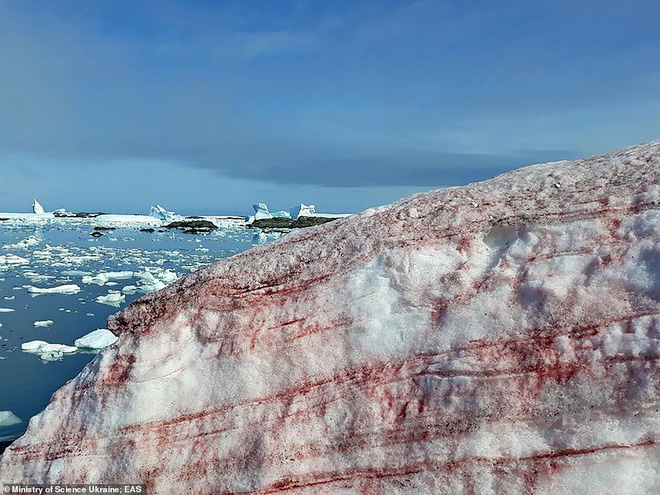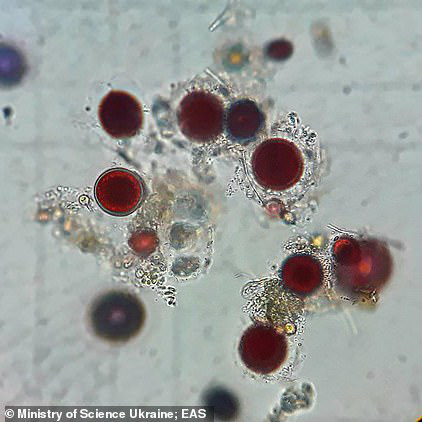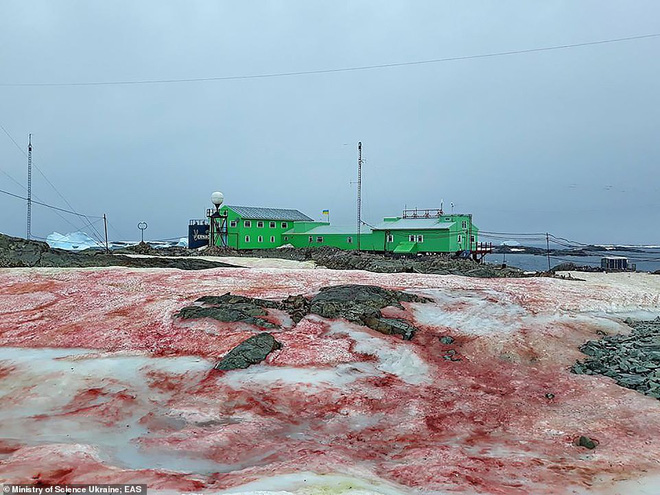Decode the phenomenon of blood-covered red snow surrounding research stations in Antarctica
- Tram Ho
Recently, the Ministry of Education and Science of Ukraine has uploaded photos of red snow as blood at Facebook at Vernadsky research station in Antarctica. According to the agency, Ukrainian scientists in Antarctica were shocked to wake up and discovered the strange phenomenon, which has lasted about two weeks. The image after it was posted has quickly caused a fever on the Internet, when most netizens were shocked at the scene like in this horror film.

Blood-like red variegated throughout much of Antarctica
However, according to experts’ explanation, this phenomenon is completely normal and nothing to worry about. Not only in Antarctica, this phenomenon has also occurred in the Arctic, the Alps, and other rugged mountain areas. The climber, adventurer Aristotle was the first to record the phenomenon of bloody snow centuries ago. At first, he did not know what caused the strange phenomenon. Only later did science discover the culprit that caused snow to change color due to the tiny seaweed that possesses a red carotene layer, called Chlamydomonas Nivalis.

Microscopic images of the Chlamydomonas Nivalis algae
This is a green algae that thrives in cold and icy waters, containing red pigment that helps protect this algae from the sun’s ultraviolet radiation. Typically, this algae lies deep in the snow in the winter but rises to the surface to reproduce when the weather gets warmer. It is the color of red when combined with the blue pigment of algae that makes the surface of the gland cover turn pink / red.

The Antarctic snow is red due to the multiplication of red Chlamydomonas nivalis
The phenomenon of snow turning red due to the Chlamydomonas nivalis algae is called “watermelon snow” because it smells like a watermelon fruit or “blood snow” due to its blood-red color. The extreme heat is causing the phenomenon to appear early, according to the scientists.Notably, the hlamydomonas Nivalis also absorbs sunlight, making the surrounding area warmer, causing the ice sheets to melt faster. This algae is also very toxic to humans if exposed.
According to the United Nations World Meteorological Organization, the Antarctic Peninsula is one of the “fastest warming” areas of the Earth. The average temperature has increased by 3 degrees C in the past 50 years.
Refer to Daily Mail.
Source : Genk
